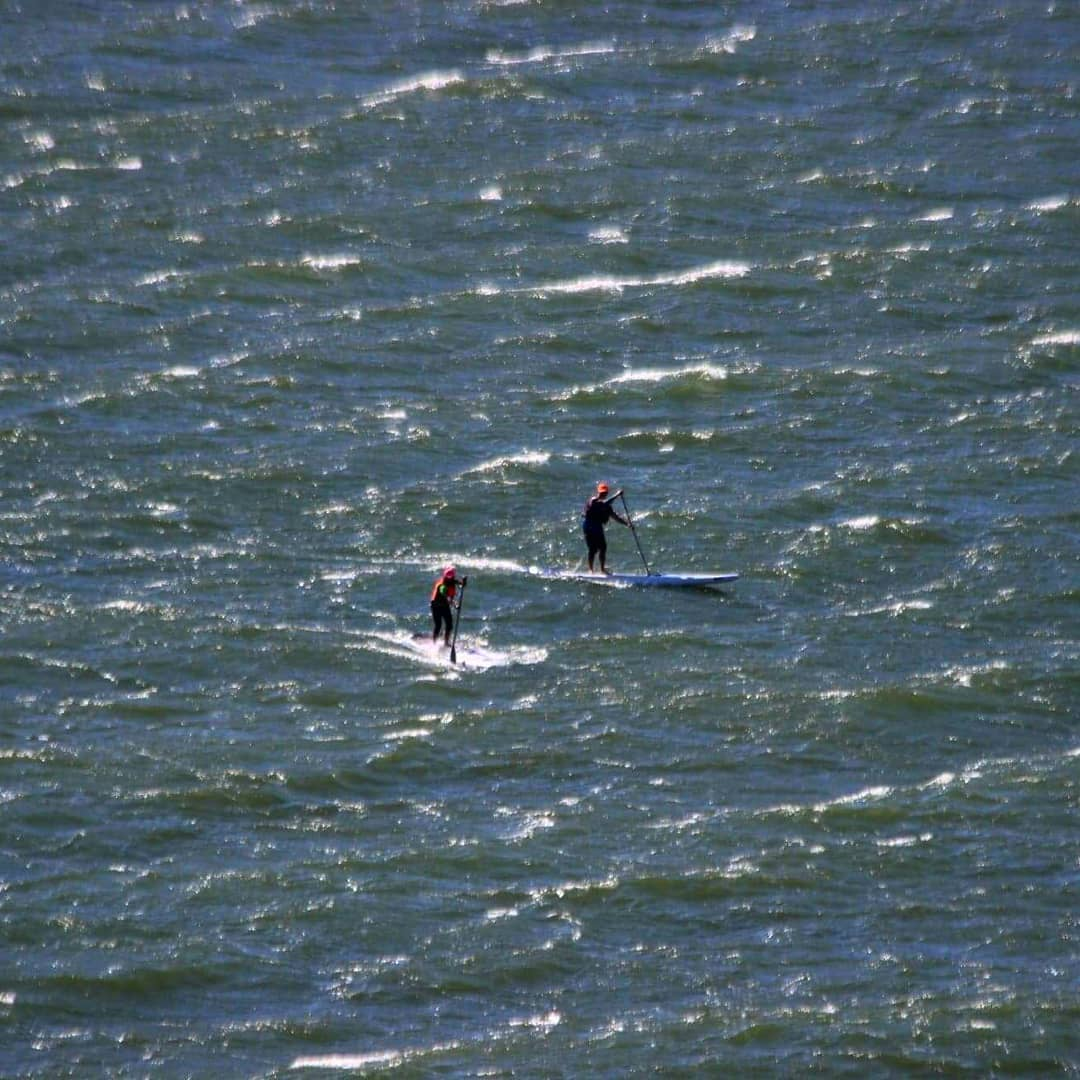
How to Paddle Board in Choppy Conditions
Paddle boarding in choppy conditions can transform a routine outing into an exhilarating adventure. With the right equipment and techniques, you can navigate the waves like a pro, whether you're on a solid or inflatable stand-up paddle board (SUP). This guide delves into key strategies for mastering choppy waters.
Key Highlights:
-
Choosing the Right Paddle Board: Highlight the importance of selecting a board suited for rough waters. Mention the advantages of solid boards with displacement hulls for wave cutting and the durability of inflatable boards designed for choppy conditions.
-
Mastering Paddle Board Techniques: Emphasize the significance of balance, using knees slightly bent, and utilizing the paddle for both propulsion and stability against the waves. Additionally, stress the need to read wave patterns and adjust weight distribution for maintaining stability.
-
Safety Protocols on Choppy Waters: Stress the necessity of wearing a Personal Floatation Device (PFD) and using a leash to ensure the paddle board remains attached to you, crucial for safety in choppy conditions.
-
The Role of Physical Fitness: Discuss how paddle boarding in choppy water demands strong core muscles and good cardiovascular health, suggesting regular fitness routines to enhance paddling endurance and stability.
-
Equipment Check: Advise on conducting a thorough inspection of paddle boarding gear, including the board, paddle, leash, and PFD, for any wear or damage, ensuring optimal performance.
-
Weather Awareness: Encourage checking the weather forecast before heading out and being prepared for sudden changes in conditions, underlining the importance of respecting nature's power.

1. Selecting the Right Paddle Board
Solid vs. Inflatable SUPs
- Solid Boards: Offer enhanced stability and performance in rough conditions. Look for a board with a displacement hull for effective wave cutting.
- Inflatable Boards: Known for their durability and portability, they can also perform well in choppy seas, especially models designed for such conditions.
Board Length and Stability
Longer boards, like race or touring models, provide stability and speed but may demand more from your skill set in terms of balance.
2. Mastering Paddle Board Techniques
Balance and Paddle Use
Maintaining balance with slightly bent knees and a hip-width stance is crucial. Your paddle not only propels you forward but also serves as a balancing aid against the waves.
Reading Waves and Wind
Understanding wave patterns and adjusting your weight distribution accordingly can help maintain stability. Be mindful of the wind's impact and consider kneeling to reduce resistance.

Understanding the waves and how your board responds to them is crucial when paddling in choppy conditions. The more you know about the ocean, the better prepared you'll be.
3. Safety First on Stand Up Paddle Boards
Paddling in choppy conditions can be fun and challenging, but it's also important to remember the basics of paddle boarding safety.
Always Wear a PFD (Personal Floatation Device)
In many places, it's not just a good idea to wear a PFD—it's the law. In choppy conditions, the risk of falling into the water increases, making a PFD a crucial piece of gear.
Use a Leash
A leash keeps your paddle board attached to you if you fall off, preventing it from being swept away by the waves. It's especially important in choppy conditions when you might get separated from your board.
4. The Importance of Physical Fitness
Paddling through choppy water demands a strong core and good cardiovascular health. Engage in regular fitness routines that strengthen these areas to enhance your paddling endurance and stability. Paddle boarding in choppy conditions requires a higher level of physical fitness compared to calm waters.
5. Equipment Check
Before venturing into rough waters, thoroughly inspect your paddle board, paddle, leash, and PFD for any signs of wear or damage. Ensure your inflatable SUP is inflated to the recommended PSI for optimal performance.
6. Keeping an Eye on the Weather
Always check the weather forecast and be aware of any sudden changes in conditions. Respect the power of nature and know when to postpone your paddling session for another day. Last but not least, always check the weather forecast before heading out.

Conclusion
Paddle boarding in choppy waters presents a unique set of challenges but also the opportunity for incredible adventure and skill development. By choosing the appropriate equipment, practicing proper techniques, prioritizing safety, and staying fit, you can navigate the waves with confidence. Remember, the key to success in choppy conditions is preparation, patience, and respect for the sea. Whether you choose a solid SUP board or an inflatable SUP, always remember to prioritize safety and have fun out there on the water.


